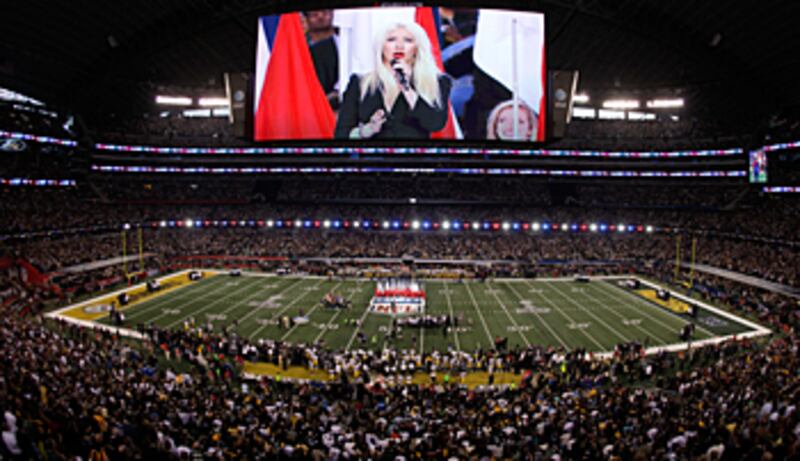The Super Bowl this week became the most watched sports spectacle in American history, so when Christina Aguilera flubbed the national anthem in front of hundreds of millions of viewers on live television, she took flack on a massive scale, from newspapers columns to snarky blogs to outraged Tweets by the tens of thousands.

In Christina’s words: What so proudly we watched at the twilight’s last—reaming? “I can only hope that everyone could feel my love for this country and that the true spirit of its anthem still came through,” Aguilera said in a statement.
“Isn’t that sad,” one sighed.
ADVERTISEMENT
In fairness, though, the vast majority of these stones came from glass houses. How many of the complainers could sing or recite the national anthem if asked? Not even in front of millions of people, mind you, but rather an innocuous audience of one—me.
That’s a question I decided to answer this week, by venturing to a random, well-educated, professional city—specifically, Portland, Oregon—and put the challenge to a few dozen red-blooded Americans. Armed with a fistful of loot, I provided proper motivation: I would give, on the spot, a $10 gift card to Powell's—the city's beloved book store—to anyone who could get it right.
Like “In God We Trust” on our currency, the Star Spangled Banner feels as old as the Republic, but its status as the national anthem is a relative new phenomenon. Francis Scott Key’s most famous writing, composed in 1814 as a poem called “Defence of Fort McHenry,” didn’t gain major traction until the Civil War, when it was played extensively by military bands. It lived on in the hearts and voices of soldiers after the war, some who lived until the early 1900s. By 1918 it was played for the first time at a baseball game, starting the modern tradition linking the song to sporting events, and in 1931 Congress declared it the nation’s anthem.
“Most people even today don’t really realize the song was written about a real flag and a real incident,” says Lonn Taylor, co-author of The Star-Spangled Banner: The Making of an American Icon and a former curator at the Smithsonian’s National Museum of American History. “We did an exhibit at the Museum of American History on the preservation of the star spangled banner and we had this huge flag—it’s the size of a basketball court laid out flat—and big labels telling everyone what it was and we did an audience exit survey and half the people coming out thought they were looking at a flag made by Betsy Ross.”
So how many people, including those who sneered at Aguilera, can even recite the lyrics? I wound up putting the challenge to 73 adults, ranging in age from 19 to 80. Total number who claimed their $10 prize? Eight. As in, 11 percent.
It’s a pretty clunky song. (Detractors have argued that “America the Beautiful” or Woodie Guthrie’s “This Land is Your Land” would make for a better anthem.) While many copped to not knowing out of the gate, still more started out confidently before, like Aguilera, flaming out on the third or fourth line—clearly the Star Spangled Banner’s trouble area. “Isn’t that sad,” one sighed. “I don’t know the national anthem.”
And that 11 percent figure is probably on the high side. My unscientific sampling skewed far more educated than the overall country, with 71 of the 73 having attended at least some college. Three of the eight correct answers came from people with some college or less; 3 claimed a bachelor’s degree; one had a graduate degree, and one was a doctor of law. Think you can do it? Give it a try right now. Then compare with the full lyrics below. Apology to Aguilera optional.
O say, can you see, by the dawn’s early light, What so proudly we hailed at the twilight’s last gleaming? Whose broad stripes and bright stars, through the perilous fight, O’er the ramparts we watched, were so gallantly streaming? And the rocket’s red glare, the bombs bursting in air, Gave proof through the night that our flag was still there. O say does that star spangled banner yet wave O’er the land of the free, and the home of the brave?






